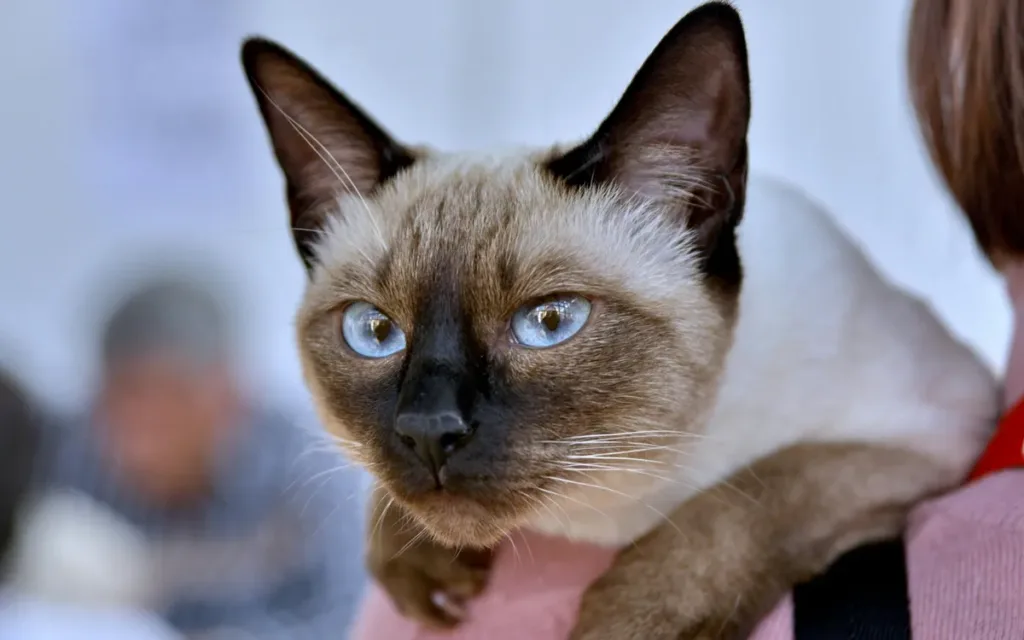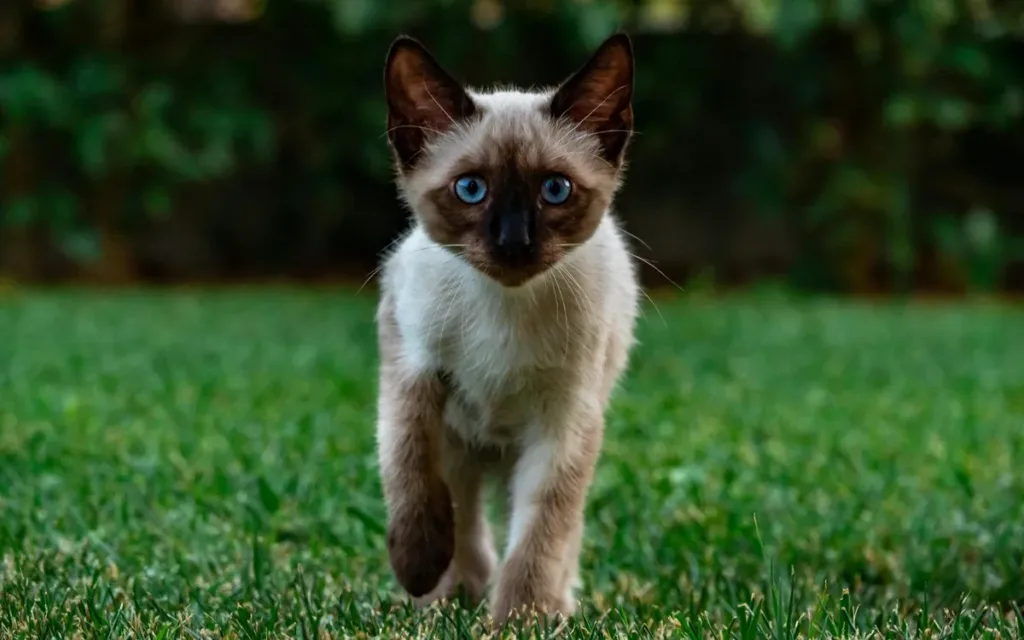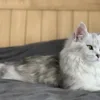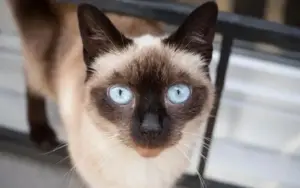Siamese Cat
- Origin: Thailand
- Size: Medium-sized cat
- Weight: Approximately 2.5-4 kg
- Nicknames: Thai Native, Coal Boss
- Lifespan: 15-20 years
- Origin Year: 14th century
Physical Features
- Head: Slender, wedge-shaped with a sharp, V-shaped face.
- Eyes: Almond-shaped, sapphire blue. Coat: Solid base color with seal point markings (dark extremities).
- Body: Medium-sized, slender, and elegant.
- Limbs: Angular and slim with long, delicate legs.
- Tail: Long, tapered, and slightly curved at the tip.
Table of Contents
Personality of the Siamese Cat
Advantages
- Social Butterfly
Known as the „dog of the cat world,“ Siamese cats thrive on interaction. They love exploring outdoors, are curious, and highly sociable. - Loyal and Affectionate
Deeply attached to their owners, they crave constant companionship and even enjoy cuddling during sleep. - High Intelligence
Exceptionally intuitive and quick learners, they understand commands swiftly, ensuring you’ll never feel lonely with them around. - Adventure-Ready
One of the few cat breeds that adapt well to outdoor adventures and travel, with minimal stress responses.
Disadvantages
- Prone to Insecurity
Highly dependent on human interaction, they may develop anxiety, depression, or obsessive behaviors (e.g., excessive grooming) if left alone. - Cold-Sensitive
Extremely sensitive to cold; their coats may darken („go dark“) in low temperatures. Ideal living temperature: 20–25°C. - Vocal Nature
A chatterbox breed—they „talk“ incessantly, which might disturb neighbors and lead to complaints. - Master Debater
Out-talk them? Good luck! They’ll respond to your every word with ten of their own.

Why Do Siamese Cats Turn "Coal Black"?
- Temperature
Cold temperatures increase tyrosinase activity, leading to melanin production and darker fur. - Age
Older cats produce more tyrosinase, causing gradual coat darkening. - Shaved Fur
A shaved area lowers skin temperature (normal cat body temp: ~38.5°C), reactivating tyrosinase. New fur regrows darker due to melanin! - Mood Changes Leading to Darkening
When a Siamese cat experiences prolonged stress or unhappiness, its fur may gradually darken. This phenomenon is linked to hormonal imbalances caused by emotional distress, which affect the activity of tyrosinase and melanin production.
Dietary Guidelines for Siamese Cats
1. Safe Foods
- Vegetables: Pumpkin, winter melon, loofah, carrots, zucchini, Chinese cabbage, sweet potatoes, cabbage, bell peppers, yam.
- Fruits: Apples, bananas, papaya, blueberries, strawberries, honeydew melon, durian.
- Meats: Chicken, duck, beef, lamb, fish, shrimp, liver.
2. Toxic or Harmful Foods
- Vegetables: Garlic stems, onions, garlic, chives, leeks, chili peppers.
- Fruits: Grapes, lemons, star fruit, persimmons, sugarcane, oranges, loquats, mangoes, avocados.
- Others: Sharp bones, coffee, tea, milk, soda, alcohol, chocolate, xylitol.

Siamese Cat Care Tips
Hereditary Inner Ear Issues
Some Siamese cats may inherit underdeveloped balance nerves in the inner ear, leading to symptoms like head tilt, disorientation, and dizziness.Respiratory Sensitivity
Siamese cats, especially kittens, are prone to upper respiratory infections. Maintain a warm, clean environment and ensure timely deworming and vaccinations.Mental Health Concerns
Their intense dependence on owners makes Siamese cats more susceptible to psychological issues such as depression, anxiety, and obsessive-compulsive behaviors (e.g., excessive grooming).Skeletal Problems
They are prone to bone and joint diseases, particularly in the pelvis and tail. Management includes physical therapy, hydrotherapy, rehabilitation exercises, or medications for arthritis and cartilage protection.
Winter Care for Siamese Cats
Siamese cats thrive in warmth and dislike cold.
- Provide a heated bed or a warm water bottle in their sleeping area.
- Keep windows closed during winter to avoid drafts.
- When going outdoors, dress them in cat-friendly clothing or wrap them in a blanket for extra warmth.









Add comment